Engine producer looks to cut product development time by 25%
April 11, 2018
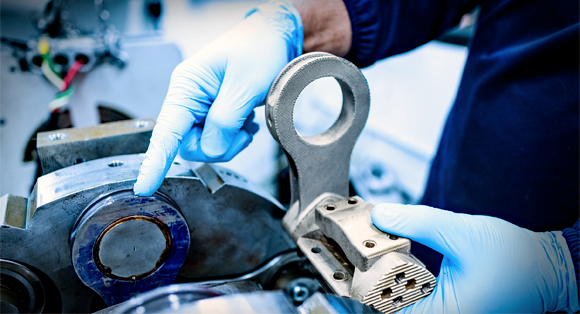
Lumenium submitted three components to Desktop Metal for initial benchmark testing: a saddle carrier, swing arm and connecting rod. These components fit together as part of a sub-assembly of the IDAR engine (Courtesy Desktop Metal)
In order to dramatically reduce time to market, internal combustion engine developer Lumenium LLC, Virginia, USA, has been collaborating with Desktop Metal to evaluate the use of its metal Additive Manufacturing Studio System™ in the product development stage. The company reports that a timeline reduction of 25%, as well as further cost and material reductions, could be achieved by switching from CNC machining to Additive Manufacturing for the prototyping of its components.
Lumenium stated that rapid prototyping is particularly important to enable the quick iteration of part features and designs required to continually improve engine performance. To produce prototype parts for its Inverse Displacement Asymmetrical Rotational (IDAR) engine, for example, the company currently uses an in-house CNC machine and wire electrical discharge machining (EDM). This makes the process of prototyping relatively time consuming and costly, with the full development timescale cycle taking between three and five years.
In seeking a faster and more cost-effective approach, Lumenium has been collaborating with Desktop Metal for several months, and – alongside Google, the US Navy and Built-Rite Tool & Die – was one of the first wave of customers to receive a Studio System in December, 2017.
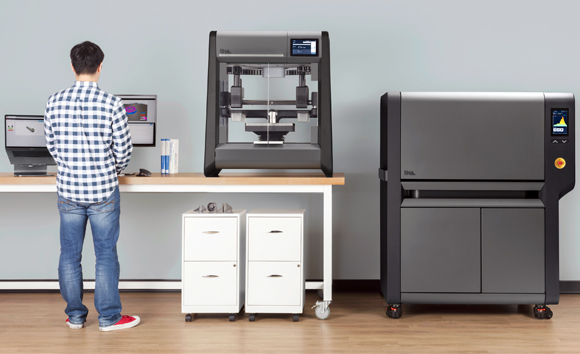
Desktop Metal’s Studio System (Courtesy Desktop Metal)
Lumenium’s parts have strict performance requirements and must be able to withstand the high heat and stress inherent to engine operation. Each engine component must have a high dimensional accuracy, strength under dynamic loads and low thermal expansion. Part weight, too, is an important consideration for maintaining the overall power density and efficiency of the engine. A move to Additive Manufacturing could give Lumenium the opportunity to lightweight its parts whilst still adhering to the engine’s performance needs.
In a case study comparing the production of a steel prototype engine part on a traditional CNC machine and on its Studio System, Desktop Metal and Lumenium found the Studio System provided cost savings of 74%, time savings of 43% and a weight reduction of 39%. In cutting the one year concept phase by 25%, one year design phase by 33% and one year fabrication/iteration phase by 50%, this approach could cut the overall product development timescale by 25%.
Case study
Lumenium is said to produce approximately twenty prototype parts per month, around 95% of which are manufactured in-house. To manufacture each new design, the CNC machine requires reprogramming, which often involves custom fixturing and part realignment by an operator; for more complex jobs, this may take weeks. Some machined parts also require post-processing by external vendors, which can add up to three weeks to the fabrication timescale.
The remaining 5% of prototype parts are sent to an outside machine shop for production, where lead times average around three weeks, limiting Lumenium’s ability to iterate on each design. This limited freedom of iteration could have a direct impact on engine performance.
In addition, to reduce part weight using machining, Lumineum’s engineers are limited to selecting a lightweight material. Reducing the weight of a machined part without changing the material generally involves altering the geometry, adding time and complexity to the machining job and potentially resulting in weak spots within the part structure.
Early versions of the IDAR engine used lightweight parts machined from solid blocks of aluminium, but the propensity of aluminium to expand under increasing temperatures made these parts unsuitable for the engine requirements. While steel parts are heavier than aluminium parts, they operate better under high temperatures, having a coefficient of thermal expansion which is 68% less than aluminium.
Desktop Metal’s Studio System produces parts with a closed-cell infill – an internal lattice structure manufactured throughout the part. According to the company, users can adjust infill spacing to meet part strength and weight requirements; enabling Lumenium to cut the weight of these heavier steel parts while maintaining the required strength. Parts with infill also have significantly lower thermal transfer.
Lumenium submitted three components to Desktop Metal for initial benchmark testing: a saddle carrier, swing arm and connecting rod. These components fit together as part of a sub-assembly of the IDAR engine and some design modifications were made to adapt them for Additive Manufacturing on the Studio System.
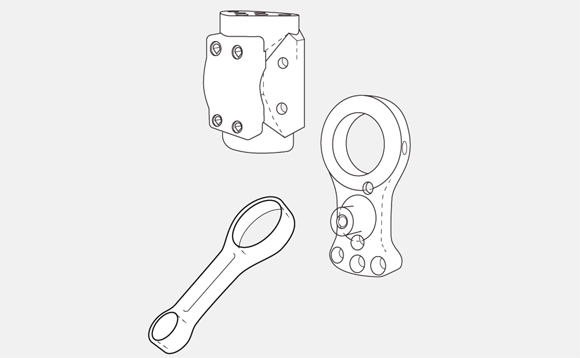
Lumenium’s saddle carrier (top), swing arm (middle) and connecting rod (bottom) (Courtesy Desktop Metal)
Design changes made included the replacement of traditional round holes with ‘teardrop’ shaped holes. This is because round holes produced using Bound Metal Deposition require internal support structures to retain their shape, while more angular ‘teardrop’ shaped holes are able to maintain their shape without the need for additional support material.
For the saddle carrier, a serrated design was required along the top and bottom edges, which mate with the swing arms. To ensure a smooth and accurate mating surface, the serrations must be machined even on an AM part. Using specialised design software, Lumenium was able to adjust the part’s shell thickness selectively by 5.2 mm on its serrated surfaces, thereby accounting for material which would be removed during machining while maintaining the part’s dimensions.
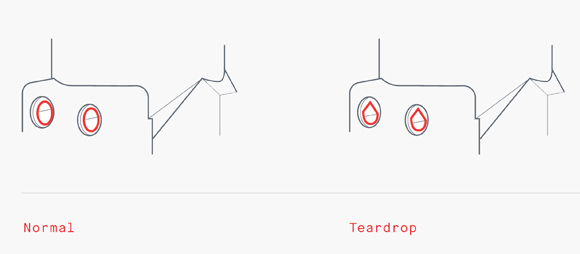
Design changes made included the replacement of traditional round holes with ‘teardrop’ shaped holes (Courtesy Desktop Metal)
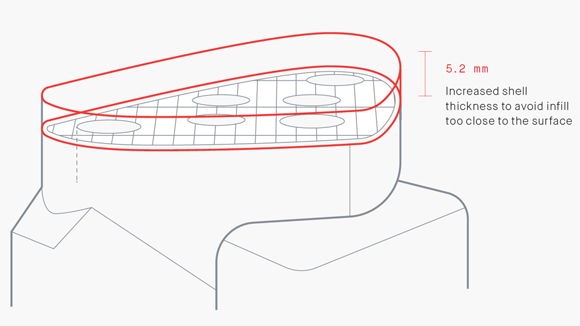
Lumenium was able to adjust the part’s shell thickness selectively by 5.2 mm on its serrated surfaces (Courtesy Desktop Metal)
Once the prototype had been built on the Studio System, Lumenium performed the required post-processing steps, including CNC machining and wire EDM. The company found that, compared to the traditionally machined part, fewer post-processing steps were required, and those required were easier to perform because less fixturing and programming was required.
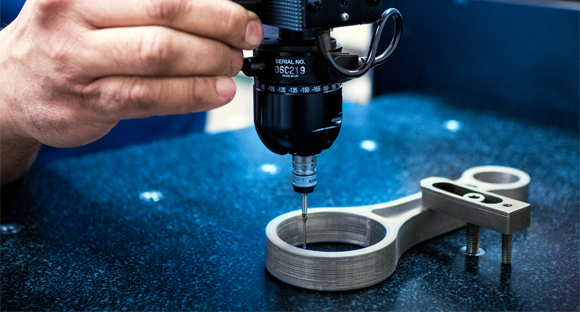
Post-processing of the part using CNC machining and wire EDM (Courtesy Desktop Metal)
The final additively manufactured part was reported to weigh 933 g, compared to the original part’s 1,500 g. Total fabrication time for the AM prototype was four days, with a cost-per-part of $148 – a significant reduction from seven days fabrication time at a cost-per-part of $990 using CNC machining.
















